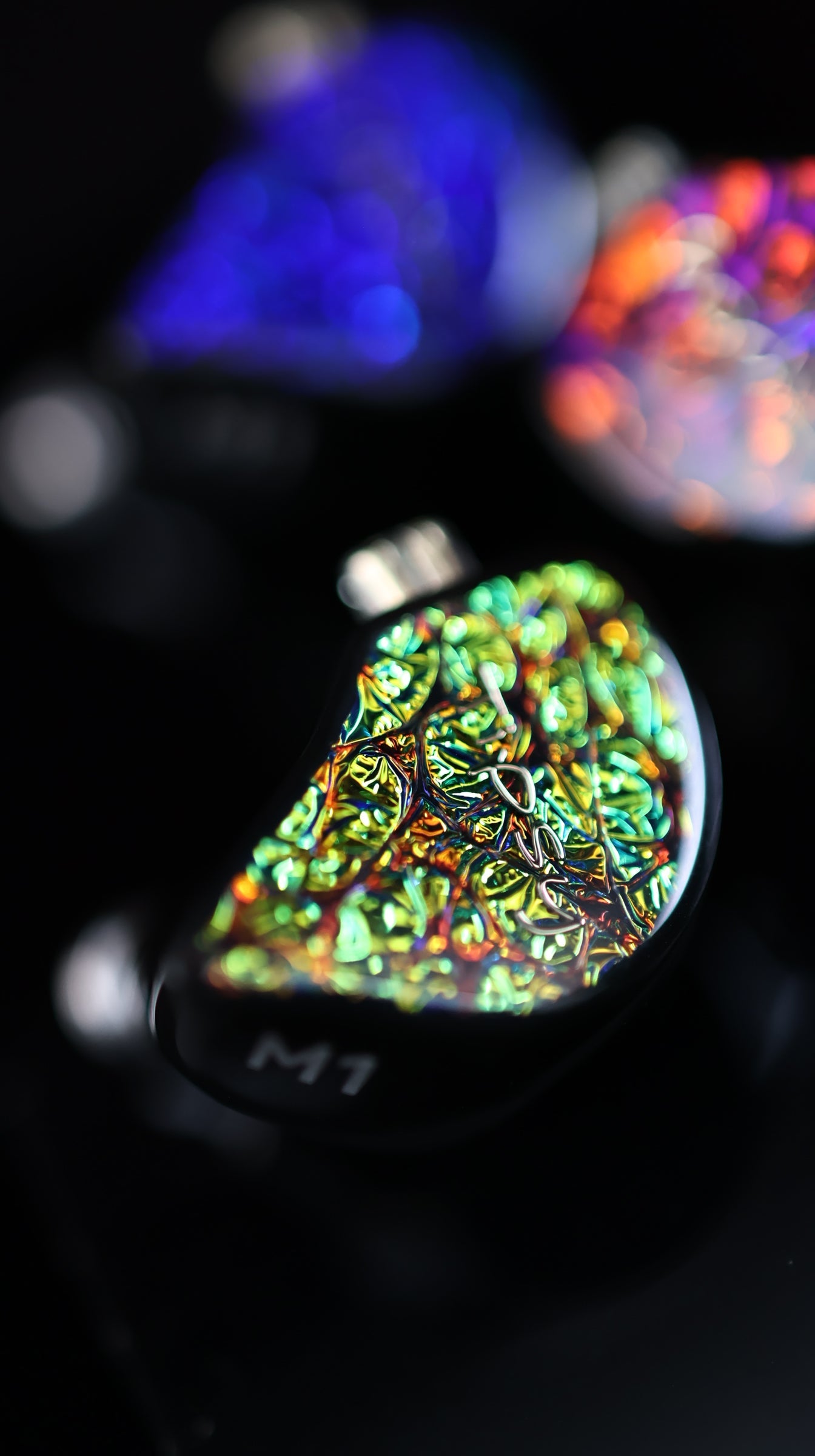1. Total Harmonic Distortion (THD)
1. THD is the extra “fuzz” that creeps into your favorite track. Keep it under 1 % across the full 20 Hz‑20 kHz band and your bass stays punchy, your highs stay crisp.
Watch for the spec‑sheet trick: “< 1 % @ 1 kHz.” That’s the easiest frequency to nail, but the extremes—sub‑bass and airy treble—can still distort wildly. Or you often see “Weighted Average” < 1%. Why use average? Because they can’t handle ultra-low and ultra-high frequencies.
Our M‑Series is tested at ≤ 1 % over the *entire* audible range, not just one comfy point.
2. Driver Count ≠ Sound Quality
More drivers on paper doesn’t guarantee better sound. Without space and tuning, it’s just parts stacking.
|
Scenario |
Looks Impressive |
Reality |
|
Budget “8‑driver” IEM |
“Wow, eight!” |
Crams the cheapest balanced‑armature units it can find—sometimes literally “whatever fits.” Little or no acoustic design, often zero real tuning. Result: spiky highs, bloated mids, timing chaos. |
|
Well‑tuned 4‑driver hybrid |
“Only four?” |
Each driver costs several times more and sits in a purpose‑built chamber with a custom crossover. Fewer, higher‑grade engines given room to perform = cleaner, more coherent sound. |
It’s the difference between eight toy speakers stuffed in a shoebox and four studio monitors in a treated room. Guess which one sounds better.
3. Acoustic Space Matters
Great IEMs are tiny concert halls. Drivers need air volume, damping materials and precise porting so sound waves don’t crash into each other. If you pack drivers wall‑to‑wall, they have no room to breathe, so clarity collapses.
4. Why Quality > Quantity
· • Phase alignment: More (cheap) drivers mean more crossovers and bigger timing errors.
· • Consistency: Fewer premium drivers are easier to match left‑to‑right.
· • Real cost: Smart acoustic design + better parts cost more than just piling on drivers.
5. Quick Spec‑Checking Tips
1. 1. Ask for full‑band THD, not a single 1 kHz number.
2. 2. Look for real material call‑outs (titanium coating, DLC, LCP).
3. 3. Check independent graphs from RTINGS, Crinacle, ASR.
4. 4. Volume‑match and A/B listen—your ears will spot the cleaner set.
6. Takeaway
· • Distortion < 1 % across the band beats a long driver list.
· • Driver quality, tuning and acoustic space outrank sheer driver count.
· • Specs sell boxes, not music—listen smart.
Happy listening!


Share:
Tipsy Moonlight Review - Best Budget IEM!
Behind the Curves: What Our M‑Series Graphs Actually Mean for Your Ears